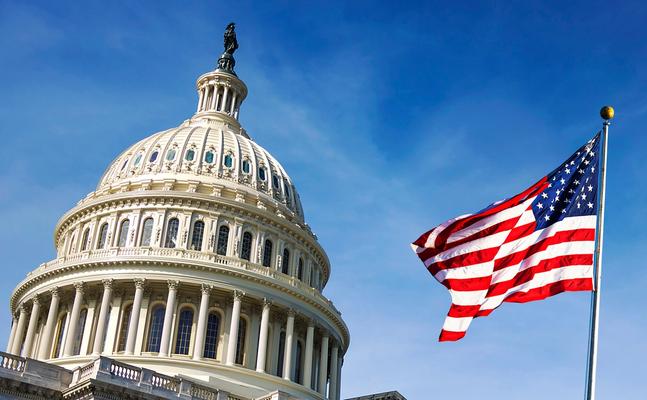Subscribe to our newsletter
Inflation began rising in mid-2021, but many didn't feel the pressure of rising prices and interest rates until 2022. Now, it feels like inflation is out of control.
In an effort to strengthen the economy, the House of Representatives passed the Inflation Reduction Act (IRA) in August 2022. The IRA, estimated to raise $737 billion over ten years, is considered a landmark bill for President Biden. It includes provisions for a variety of issues, such as healthcare, income taxation, and climate change. It will also impact the multifamily housing industry in several key ways.

What’s included in the Inflation Reduction Act?
Contrary to what the name suggests, the Inflation Reduction Act may not immediately curb inflation. However, it will have a lasting impact on many aspects of the economy.
Key items in the Inflation Reduction Act:
Corporations earning at least $1 billion annually are subject to a new tax rate of 15%, which will take effect in January 2023.
A new 1% excise tax on stock buybacks begins January 1, 2023.
By 2025, Medicare recipients will pay no more than $2,000 out-of-pocket annually for prescription drugs.
After years of budget cuts, the IRS will receive additional funding totaling $80 billion over the next 10 years.

So, what are the implications for multifamily owners?
There are several key items included in the IRA that could alleviate certain pain points for multifamily operators.
1. Sustainable retrofits can earn rebates, especially for low-to- moderate income developments.
The IRA has earmarked $9 billion for energy-efficient homes, which includes a $4.3 billion Home Owner Managing Energy Savings (HOMES) Rebate program as an incentive for homeowners to upgrade their homes with energy-efficient features.
Sustainable retrofits are particularly appealing to multifamily owners, especially as they relate to affordable housing projects. The IRA allocates just under $838 million for housing owners who upgrade affordable communities with energy storage and conservation, improved electrical connections, enhanced air quality, and water conservation.
Depending on the level of energy savings achieved, each unit in a conventional multifamily development can receive between $2,000 and $4,000 back in credits. These credits double for low-to-moderate income housing projects.
The IRA offers multiple types of tax credits and rebates for those who pursue these projects, making affordable housing revitalization an even more appealing prospect.
2. Production will ramp up for US-made solar panels, heat pumps, and more.
Speaking of retrofits, the Biden administration has laid the foundation for domestically produced solar panels, heat pumps, and more—all of which are helpful when trying to update housing stock.
The Inflation Reduction Act aims to kickstart production of certain energy-efficient products in the United States. The act has set aside $30 billion in tax credits for companies that will domestically manufacture solar panels, wind turbines, batteries, and heat pumps, as well as process critical minerals.
There is an additional $10 billion in investment tax credits for companies that build new facilities to manufacture these technologies. The end goal is to make it easier and faster for consumers—including multifamily developers and homebuilders—to receive US-made materials.
3. Electric vehicles may soon fill your parking lots.
Purchasing an electric vehicle just got a lot easier for many Americans. Starting next year, qualifying electric vehicle (EV) buyers will receive a tax credit of up to $4,000 for a used EV and up to $7,500 for a new EV. The only stipulation is that these vehicles must have final assembly in North America.
Electric vehicles are still rather expensive, at an average cost of $66,000. However, EV prices are expected to fall as the demand rises. Experts predict that EVs may be closer in price to gas-powered vehicles by 2030.
With all of these developments in the electric vehicle market, don’t be surprised if you notice more EVs rolling around your community! In addition to charging stations, consider a smart parking solution that can better manage the vehicles at your property. Learn more about SmartRent’s parking management solution.
One thing hasn’t changed: Carried interest rules.
One thing that the new act does not include is any change to current carried interest rules. Originally, the IRA included a provision that would have extended the carried interest holding period from one to three years. This provision was removed, leaving carried interest taxation unchanged.
The National Apartment Association calls this a “significant victory” for the sector. Carried interest is an essential part of negotiating new rental housing development and the rehabilitation of current rental housing. If interest rates had been modified in the IRA, these developments would have suffered.

SmartRent is your ideal technology partner
Although the Inflation Reduction Act contains numerous important provisions, multifamily operators and owners will likely agree that the most important updates are focused on energy efficiency and sustainability.
We can expect to see more legislation like the IRA become law as our collective interest in clean energy increases. Choosing a smart home technology provider that is capable of meeting future housing demands is crucial.
SmartRent offers a wide range of smart automation products, including smart thermostats, leak detection sensors, parking management, and more, to set multifamily providers up for success. Request a demo to receive a personalized overview of what SmartRent could look like in your communities.

